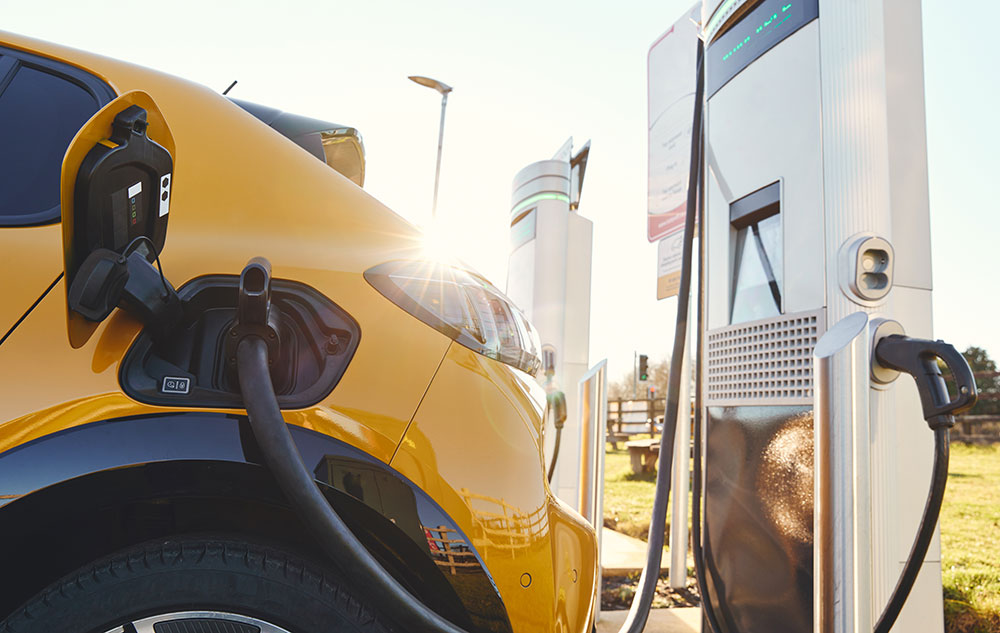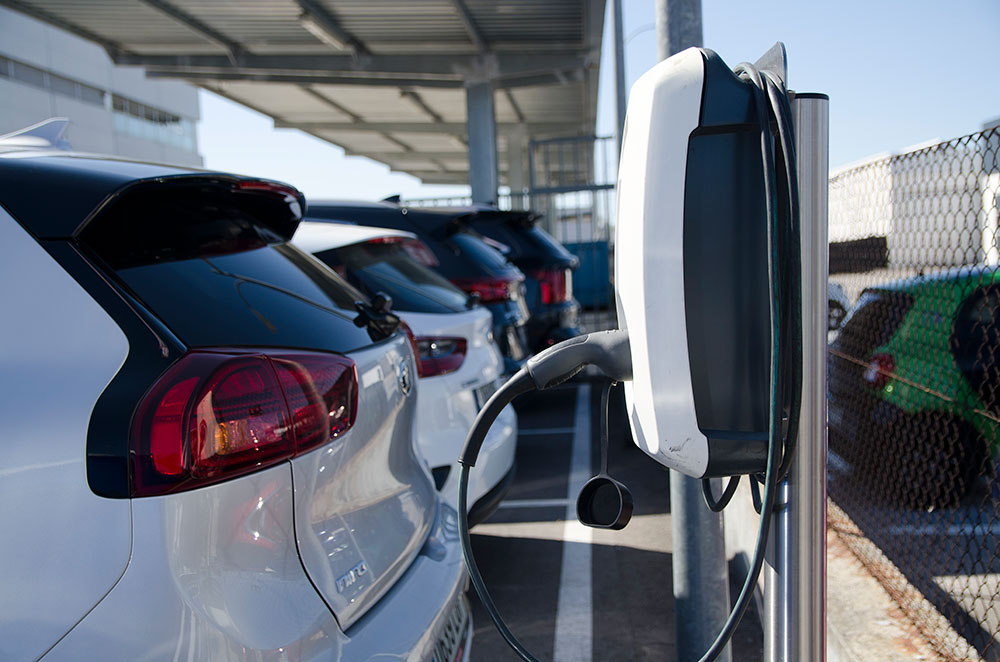ASIDACO is EVITP Certified to Install Levels 1,2 and 3 EV Charging Stations

Choosing and installing a charging station
EV charging is divided into 3 levels; level 1, level 2, and level 3. Generally speaking, the higher the charging level, the higher the power output and the faster it will charge your electric car. However, there are a few more things to consider. Before diving in deeper, it is important to understand the way EV charging stations are powered. Without getting too technical, there are two types of electrical currents important when it comes to EV charging: Alternating Current (AC) and Direct Current (DC).
Level 1 uses the standard wall outlet of 120 volts. It is the slowest charge level and requires tens of hours to fully charge a 100% electric vehicle and several hours for a plug-in hybrid.
Level 1 and Level 2 charging converts AC to DC via the vehicle’s onboard converter, Level 2 is the typical EV plug found in homes and garages. Most public charging stations are level 2. RV plugs (14-50) are also considered level 2 chargers. Roughly speaking, Level 2 charging is about 5 to 15 times faster than a level 1 charger depending on the power output and the vehicle you’re charging.
Charging for an hour with 7.4 kW will result in about 25 miles (40 kilometers) range, 11 kW in 37 miles (60 kilometers) range, and 22 kW in 75 miles (120 kilometers) range. These calculations are approximations based on the average battery consumption of 18kWh per 62 miles (100 kilometers). Actual power consumption depends on the vehicle, battery size, and vehicle conditions.
Level 3 charging supplies the battery with DC power directly. This is because the conversion of AC to DC charging happens outside the vehicle and in the charging station itself. Level 3 charging (also called DC charging or fast charging) cuts out the time-consuming conversion process and feeds the EV battery with the power it needs directly. Level 3 charging (DC) is significantly faster than level 2 charging stations. Depending on the vehicle and power output of the level 3 charger it can take between 15 minutes to an hour to charge most electric cars—making it quick and easy to charge on the go. Because the power output needed for level 3 charging is a lot higher than for level 2 charging stations, they’re far more suited to commercial businesses like gas stations and you typically don’t see level 3 chargers installed at homes or office spaces. These charging stations are the quickest way to charge a vehicle. Note that not every EV can charge at level 3 chargers. For fast charging, the CHAdeMO and SAE Combo (also called CCS for “Combo Charging System”) are the most used connectors by electric car manufacturers.
Let ASIDACO select the Right Level of Public charging for Your Electric Car
First of all, we recommend you avoid level 1 charging stations. They are too slow and are not adapted to EV drivers’ needs when they’re traveling. If you want to charge in the fastest way possible, you should use a level 3 charger, as these charging stations will provide a lot of range to your EV in a short amount of time. However, charging at a DCFC station is only effective if your battery’s state of charge (SOC) is below 80%. After that point, charging will slow down significantly. Therefore, once you reach 80% of charging, you should plug your car into a level 2 charger, since the last 20% of charging is as fast with a level 2 station as a level 3, but it is way cheaper. You can also continue your journey and charge your EV back to 80% at the next level 3 charger you meet on the road. If time is not a constraint and you’re planning to stop several hours at a charger, you should opt for a level 2 which is slower but less expensive.
We are here to help you. Please contact us for a free consultation.

